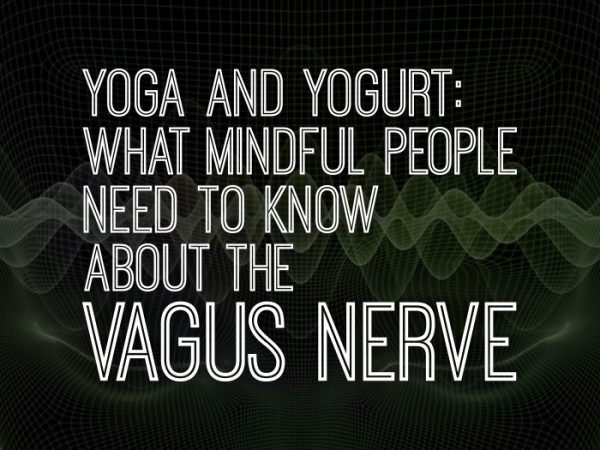There is a great deal of current scientific interest in the relationship between gut bacteria and the brain. Studies suggest that communication exits between the two and that this bacteria-brain communication has the potential to help with difficulties like anxiety, depression and chronic pain. Some kinds of gut bacteria appear to activate the vagus nerve—the nerve that wanders from the brain to the belly and that can keep us present and playful like the laughing Buddha.
Scientists are studying what happens when mice are fed a gut bacteria called lactobacillus. Studies show that the mice given the lactobacillus are less likely to go into shut-down when they are under stress. The next step will be to figure out how gut bacteria’s communicative properties can help us monkey-minded humans.
Mindfulness calms our monkey minds but it can be hard to maintain that yoking of mind and body once we leave our mats, move more rapidly and interact with other people. Traveling from village to village like the laughing Buddha can be pretty exhausting for most of us these days. Could yogurt help?
Polyvagal Theory Teaches Us about Our Wandering Nerve
As a licensed professional counselor, board-certified dance therapist, and long-time yoga practitioner, I look to Stephen Porges’ polyvagal theory for the guidance we need to understand the vagus nerve and therefore its interaction with gut bacteria. Porges’ discoveries help us appreciate that the vagus nerve has two major branches.
Understanding the very different roles that the two major branches play seems key in exploring how the vagus nerve interacts with gut bacteria in humans. One branch—the ventral vagal branch—can help us stay mindful during active states. The other—the dorsal vagal branch—can help us rest and digest our foods.
Each of the branches has a flip side. In situations of life-threatening danger, the ventral branch gives over complete control to the sympathetic nervous system, which creates fight/flight. If fight/flight cannot save us, the dorsal branch creates shut-down. So, while studies suggest that good gut bacteria can activate our vagus nerve, a delicate interplay of the two branches must happen in order for our gut environment to host this healthy gut bacterium. We need our yoga in order to digest our yogurt. Yogurt and yoga are interdependent.
In service of healthy bonding between our wandering nerves and lactobacillus, I offer the following story. I wrote it imagining the laughing Buddha traveling from modern city to modern city, teaching how the introduction of healthy gut bacteria into the already existing microbe community of a dysfunctional human body might affect that body to provide healthier functioning. Find a cozy seat and imagine the laughing Buddha as you read:
How the Arrival of Gut Bacteria Changed the Environment!
Mr. and Ms. Vagal Nerve served in partnership as Co-Mayors of a small town. The town was not doing well. Businesses were shutting down. Townspeople were constantly arguing over trivial details to the point of nearly rioting.
Mr. Ventral Vagal Nerve was short-fused—on the edge as they say—constantly anxious. Ms. Dorsal Vagal Nerve was depressed. She couldn’t sleep. Nothing she ate sat well in her tummy and she felt so hopeless that she would lose herself in mindless scrolling on her phone for long periods of time, day and night.
Ventral Vagal would snap angry insults at Dorsal Vagal because he felt desperate to wake her up. He felt a frantic need to engage her in conversation about the town’s issues but the more frantic he felt, the more shut-down and dissociative she seemed to become...(more)
To read the full article please download our Asana Journal App or purchase Issue 173 May 2017.




















 Other
Other